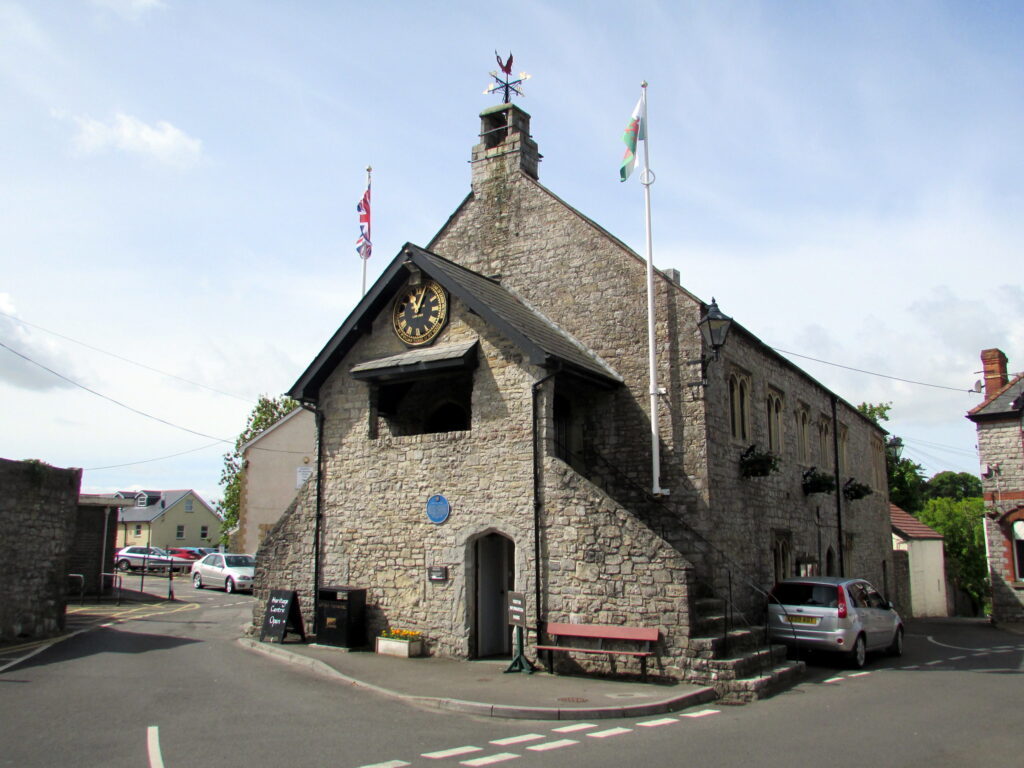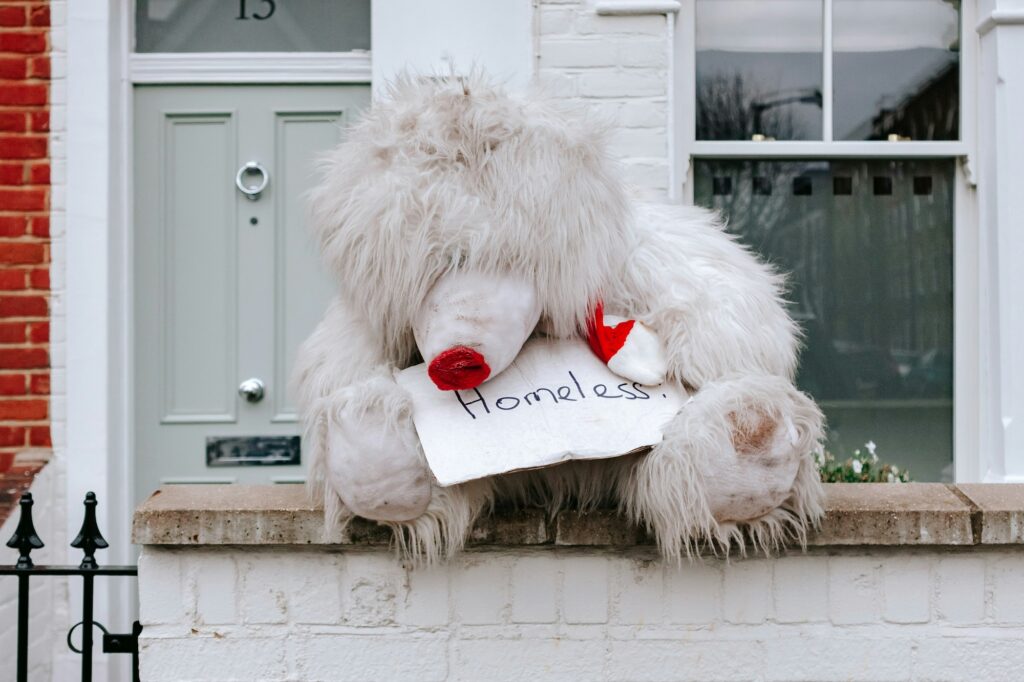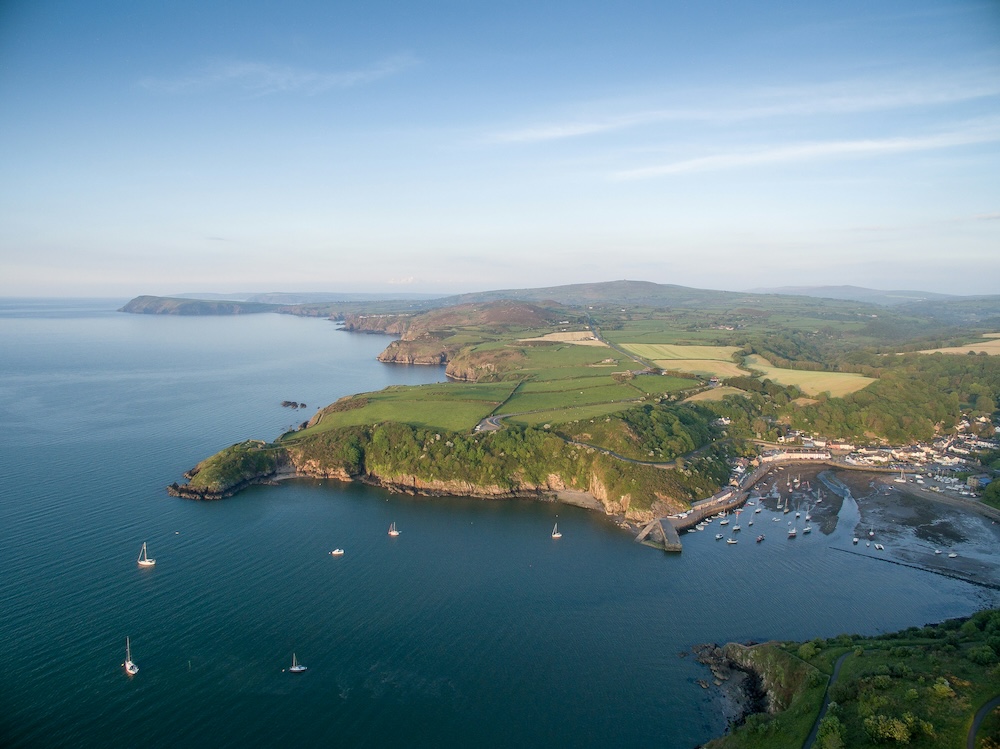Having settled in Wales, Claus Apel celebrates his adoptive community’s welcoming spirit, a year on from a rally against refugees in Llantwit Major that was met with a counterprotest.
In 2021 my wife and I moved to Llantwit Major, a lively yet peaceful town in the middle of the Vale of Glamorgan. Joining various groups – a parish community, a charity in charge of a Syrian refugee family, the local history society, a choir – I quickly came to value the community spirit of my new home town.
Then, a year ago, I was shocked to hear of a prospective rally against plans of the Vale of Glamorgan Council to create new homes in our town for refugees from Ukraine. Among other places in the UK, the group was planning to target Llantwit Major to sow discontent among the citizens and thus prepare the ground for their hate-filled ideology.
What has this got to do with me?
A naturalised British citizen, I am a German national by birth, holding the passports of both countries that I call home. In the 1950s I grew up in a defeated, destroyed and dishonoured nation that was split in two and regarded by everyone as the pariah state that had succeeded the ‘Third Reich’.
This country and its people have rightly been held responsible for some of the worst atrocities in the history of mankind. 25 years before I was born, its citizens had allowed a far-right group to become – within a decade – the dominant political party, which succeeded in subverting Germany’s fledgling democratic system into a voiceless and spineless instrument in the hands of the Nazis, the new masters who were bent on gaining dominance by subduing everyone within their reach.
I grew up among the ruins of their defeat, and, as a child, subconsciously felt the shame and humiliation that the generation of my parents went through. They, like most adults that I met at the time, were not able to own their feelings and thoughts, let alone express them.
I pursued a career as a history teacher in secondary school before I moved to the UK. The new reality, since 1990, of a united German nation taking on a responsible role within the European Union has fascinated me ever since its beginnings in the 1950s, and it still does. The dictum ‘Nie wieder Krieg in Europa!’ (‘No more war in Europe!’)’, which inspired the nations of the continent and their leaders, still rings true to me.
The Glamorgan Gazette of the 18th September, 1914 reports: ‘Refugees at Cowbridge. House prepared for them. – A family of Belgian refugees, eight in number, and representing three generations, are now being provided for in Cowbridge.’
Among the painful moments of recent years, the outcome of the 2016 referendum on the United Kingdom’s membership of the European Union (and how it came about) is one of the worst, as this campaign completely blanked out the deeper motives that led to the creation of the ‘European Union’ and its institutions in the first place.
And then, a year ago, came this sinister attack against those who wish to help people in need of shelter, who cling to hope for their future. I felt the urge to do something, to stem a new tide of divisiveness, which takes advantage of the general public’s short-sighted oblivion of history.
I started writing a history of Wales as a ‘Country of Sanctuary’ – a very spontaneous thing, not premeditated at all. Here, I will focus on the events of the First World War as they had an impact on the citizens of my new home area. This is an effort written by someone whose first language is not English and whose knowledge of local history is patchy at best. Yet, I am looking into books, articles and archive material that give evidence of the fact that people here have always been prepared to help. This text is an excerpt of a broader research project on refugees fleeing to Wales and the inhabitants who have helped them – through the ages.
Welcoming Belgian Refugees in South Wales
In the Glamorgan Archives is a postcard of a Belgian family who took refuge in Cowbridge in 1914 – three ladies sitting in the centre with three children squatting in front of them while two men stand in the back. The Glamorgan Gazette of the 18th September, 1914 reports: ‘Refugees at Cowbridge. House prepared for them. – A family of Belgian refugees, eight in number, and representing three generations, are now being provided for in Cowbridge. A comfortable cottage was secured, useful articles of furniture were put in by many who were anxious to help, good beds were…’
The atmosphere in the photo is palpable: after a long ordeal, they are finally safe – but this place in rural South Wales is not their home.
The Gazette again, on the 25th of September, we read: ‘We should have stated in our note last week regarding the Belgian Refugees (…) that Mr Ebsworth of Llandough Castle is also providing for a number of these unfortunate people and that they are being well cared for in two cottages in Llandough …’
Many newspaper articles from the autumn of 1914 sketch a similar picture from all over South Wales. The locals in Bridgend, Porthcawl, Cowbridge, Coity, Llantwit Major, Barry, Cardiff and many other places were clearly eager to help in all sorts of ways.
Robust debate and agenda-setting research.
Support Wales’ leading independent think tank.
In 2014, on the centenary of the outbreak of the First World War, the Glamorgan Archives collected and published snippets of these reports under the heading ‘Belgian Refugees in Glamorgan’.
Among these stories, one from the 30th April 1915 stands out. The Gazette reports: ‘Bridgend – Belgian Refugees Married – Interesting Ceremony – An interesting marriage took place at St Mary’s Roman Catholic Church, Bridgend, on Monday, the contracting parties being Miss Marie Torcelle and Mr Charles Mohn. The bride was one of the Belgian Refugees who are the guests of the Churchpeople of St Mary’s, Nolton. at Glenavon. The bridegroom was a sea-faring man …’.
Around the same time, the Cardiff town council discussed the idea of setting up workshops to make good use of the refugees’ expertise in lace-making and dress-making with the Unemployed Women Sub-Committee and Technical Instruction Committee set up by the Cardiff town council.
Various aspects of finding work for the refugees were also discussed in the face of a dire shortage of farm workers.
There were various cases where the local council had an obligation to act on behalf of families left behind without a breadwinner, such as Mrs Seite in Aberkenfig, married to a Frenchman, whose husband went back to fight in France.
The Chief Constable’s Office of Glamorgan reported on the 12th February 1915: ‘Belgian Refugees within the County – 1327’; and further: ‘Refugees residing with “Defended Harbours” – 378’, with 104 of them in Barry.
As the war dragged on, the circumstances around the refugees’ situation became more difficult to handle. In November 1914 a dispute between the government in London and local authorities was triggered by the ‘Aliens’ Restriction Act’ of the same year, which led to a statement quoted in the paper: ‘A Belgian Refugee should be allowed to remain in any part of the district (…) without the consent of the Chief Constable.’
What had led to this situation? Here a look at the political situation may be helpful.
After the assassination of the Archduke of Austria in July 1914, a diplomatic and military hysteria took hold of the major European powers. Austria, allied with Germany, was facing Russia and its allies France and Great Britain. The multiple and mutual declarations of war in the first days of August released the general tension on the continent in the worst imaginable way.
Within days the German high command set the Schlieffen Plan in motion. It was the core element of the German strategy to achieve its main objective, the conquest of Paris and the subjugation of France. In short, it aimed at the German troops rushing through neutral Belgium to reach the Channel and prevent Great Britain from joining the French allies. All this went horribly wrong from their perspective; the German troops never reached the Channel or central Paris, and the warring parties got stuck in a nightmare of trench warfare on Belgian soil for more than four years. It was the young generations in every country and their families who paid the price.
I want to look again at the events in South Wales at the time.
On the 30th of October 1914, the Glamorgan Gazette gave a detailed report of the arrival of Belgian refugees by train at Llantwit Major Station.
‘The first batch, consisting of husband, wife and two children, and two aunts, arrived at Llantwit Station on Saturday afternoon, and were given a hearty reception. The station approaches were lined by the inhabitants, and a large contingent of the children from the Council Schools.’
Innovative. Informed. Independent.
Your support can help us make Wales better.
A Belgian refugee, who had arrived earlier and lived at St Donats Castle and spoke English, introduced the refugees to the locals. The article continues:
‘The family, a teacher and his wife and children from Malines who had lost everything through German bombardment, were moved to tears when they were driven to their new home. They showed their gratitude by waving towards the crowd lining the street.’
A committee had prepared the accommodation of the guests at Orchard House in Boverton. Its owner, Miss Nicholl, had offered her property for the refugees free of rent.
In the same issue, an article headed ‘Six at St. Donat’s’ mentions the kindness of Mr Godfrey Williams, who took in ‘a family of six’ whose dwelling and business at home were similarly destroyed.
The outpouring of support and show of solidarity in Llantwit Major continued over more than four years, as the Glamorgan Gazette reported again and again.
The year 2014, which marked the centenary of the events, brought a flood of online research on the topic of refugees.
I hope that my text provides some evidence that people in South Wales have a proud history of being ready to care for those in need – as they were ready in 1914.
One headline of 1914 read: ‘Wales Welcomes Over 4500 Belgian Refugees’ and the article continued:
‘Fearing persecution by the invading German army, some 250,000 decided to leave the country and relocated to the United Kingdom, the largest influx of refugees in British history. Some of those found new homes in the South Wales valleys.’
The local parishes and chapels had a part to play with regard to helping the refugees.
Councils everywhere set up schemes of weekly subscriptions for the public to support the case; the ‘Belgian Refugee House’ in St Bride’s Minor was offered free of rent, as it happened with apartments in Roath, Cardiff. Here, the United Reformed Church also furnished the dwellings.
A Nation of Sanctuary
One area the local authorities had to deal with was the health of the refugees and the possible threat of the spreading of infections, including an outbreak of smallpox at the Earls Court Refugee camp in Penybont.
In my research I found that most local authorities tried to help the refugees by reducing or completely cancelling the cost of accommodation and other expenses. In Llantrisant, Llantwit, Penarth, Councils recommended to lift the ‘rates’ in ‘premises occupied by Belgian refugees’: ‘… that the Collectors be instructed not to collect rates from premises occupied by Belgian Refugees …’ (Llantrisant and Llantwit Fardre Rural District Council); ‘Resolved that Belgian Refugees in Penarth be allowed to use the Baths free of charge’ (Penarth Urban District Council).
The Urban District Councils found more and inventive ways to help. Ogmore and Garw organised a Christmas Day collection for the relief of the Belgian Children; Porthcawl arranged for ‘a visit of the Belgian artistes on Friday next and that the use of the Pavilion be free of charge’; Mountain Ash arranged for meetings to be held in the various parts of the District with the view to make arrangements for housing and for providing for the comfort of the Belgian Refugees.
At the Cardiff Borough Council the librarian stated that ‘Mr H Stanley Jevons had sent a number of French books on loan for the use of the Belgian Refugees’, and a letter was read from Mrs Marychurch, applying for ‘work for a Belgian refugee as book repairer or binder’.
On 17 December 1914, the County Borough of Swansea discussed the possibilities of employing refugees. Yet, as mentioned before in the Alien Restriction Act, they were compelled to state: ‘No more refugees in Swansea’ after the government had declared the town a “defended harbour”’ – the town was deemed to be prone to air strikes.
A detail gives an insight into how the war situation impacted on a school in Swansea. The minutes of the managers’ meeting at St David’s and St Illtyd’s School on 21 March 1918 read: ‘Overcrowding due to several Belgians in the school together with children from London that have come recently to escape the air-raids.’
It is often well-known why and how a refugee situation starts and evolves, but very rarely do we learn how it ends. I read in various cases of Belgian refugees that they returned to their homes when they felt safe to do so. Others move on to settle for good in their country of sanctuary or go further abroad to live there.
Interestingly, some Belgians kept the personal bonds they had formed as children with their friends in Cowbridge alive – as documented in the ‘Refugees’ section in The Cowbridge Story by John Richards, published in Bridgend in 1956. They were still in touch with each other after more than 40 years.
A year on since a far-right group tried to undermine the public mood in Llantwit towards Ukrainian refugees, and the houses at Eagleswell Road are nearing completion. Lately, there have been angry voices in the neighbourhood, such as ‘These houses are too close to our back gardens!’ I would expect that those in charge of the building project will do everything they can to ease these problems and instead put an emphasis on creating a welcoming atmosphere for the newcomers.
I hope that my text provides some evidence that people in South Wales have a proud history of being ready to care for those in need – as they were ready in 1914. In our town, for example, ‘More in Common’, ‘Llantwit 24’ (which formed itself during the vigil on the 24th March) and ‘Croeso Llantwit’, alongside other more established groups, are there to help. And we are not easily intimidated.
All articles published on the welsh agenda are subject to IWA’s disclaimer. If you want to support our work tackling Wales’ key challenges, consider becoming a member.





